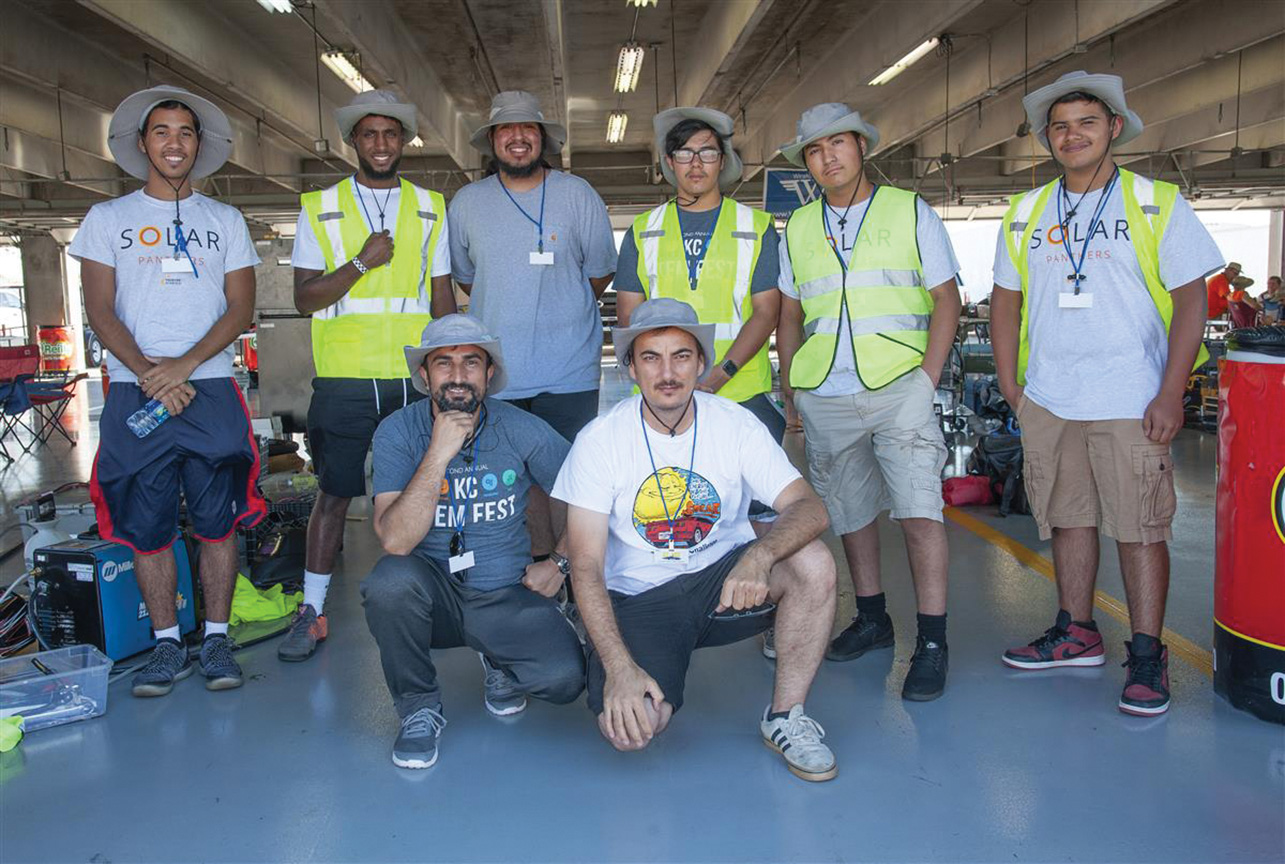Elizabeth Orosco
Northeast News
Frontier STEM High School students took home sixth place in the Classic Division at this year’s National Solar Car Challenge Race at Texas Motor Speedway.
Alongside 44 nationwide teams, Frontier School was the only team representing the entire state of Missouri.
The Solar Car Challenge began in 1993 when the Solar Car Team launched an education program to teach high school students how to build and safely race solar cars.
The Solar Education Program provided curriculum materials, on-site visits, and workshop opportunities for students nationwide.
Amat Ovezov, STEM coordinator for the Solar Panthers, said it has been a long process for the students.
The project began three years ago, he said, and this year was the school’s second year to compete.
Last year, the team took home ninth place, but have made several improvements to the original car, such as creating a lighter frame.
The car measured 3.9 meters long, by 1.68 meters wide, and 1.3 meters tall, weighing 1,080.27 pounds.
The car was powered by four panels of solar cells, measuring 1.67 meters long by .95 meters wide with a 17 percent efficiency.
Last year’s competition was also different. The team drove cross-country from Texas to California. This year, the competition was inside an enclosed NASCAR track.
The Solar Panthers completed 366 miles at an average speed of 13.1 miles per hour.
The process to be in the competition isn’t easy, said Ovezov.
Teams must apply, build and complete their solar car, and qualify for the competition. In Texas, the teams also must pass a three-day inspection to qualify for the actual competition.
Of the 44 teams that went to Texas, only 25 passed the three-day inspection, including Frontier.
Ovezov said students interested in the extracurricular activity don’t need any prior knowledge. The advisors start the students from scratch.
“We start with basics— welding two pieces of metal together,” he said. “That’s the first class. Basically, we are teaching them a skill. Then, we go to the electric part of the car. We learn how electric motors work, how we connect batteries to the motor, what the components are, and the technical stuff that comes after the welding.
Ovezov said this project is a huge challenge for students, but they learn a lot in the process.
“They learn theory in the classroom, but putting it into practice is a challenge,” he said.
The experience the students have in Texas during the competition is also a learning opportunity.
“When we go there, it’s not only us showing what they did, it’s also seeing what other schools did for their cars, too,” said Ovezov. “There were a lot of practices and everyone was open to sharing their solar cars and explaining how they managed to build it. For kids, it was a lot of experience in sharing and learning from other teams and sharing their own ideas with other students.”
Ovezov said the students are planning on making even further improvements to the current car for next year’s competition, including changing the solar panels and getting new batteries for the car.
But the most exciting experience for the students?
“When the car moved by its power,” he said. “That was the most exciting part. When we connected everything, it took a while to make it run, but we kept working on it and one day, when one of the students pressed the throttle and it moved, that was the most exciting part.”
For more information on this year’s race or the Solar Car Challenge, visit solarcarchallenge.com.


















